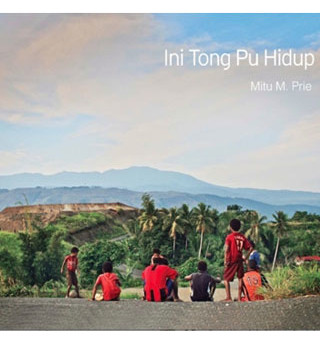Papua region, Indonesia’s easternmost territory, is so far from the country’s capital — geographically, culturally and historically — that many people in cities of Indonesia have little understanding of what life is truly like on the faraway island. The everyday life portraits are those of a culture in search of identity. And of course a picture is worth a thousand words.
This could not apply more aptly than what was captured in Indonesia’s Papua region by myself as a communications consultant, archaeologist and amateur photographer. My photos take those who view them on a journey to witness the peoples of Papua and West Papua provinces interacting with other cultures while retaining their own.
I had the opportunity to live and work in both Jakarta and Papua during the last 10 years. The series of visual stories were compiled while working as a researcher and social activist in the region. Also, they were compiled while I was working on public health campaigns, and travelling to the highlands of Papua, crossing the deep and often choppy lake waters, plunging my feet onto the beaches and looking out to the Pacific – from town markets through the hills and mountains, and into the forests. My pictures are rich in human emotions, against a backdrop of the Papuan nature.
The photos in this book are displayed as three “story lines” with short introductions at each beginning. The first story narrates the profile and daily activities of the Papuans. This includes glimpses of village and city dichotomy which has provided with much food for thought. The second story is about the strength of the Papuan women, which is very impressive. The third story is, of course about the beauty of the Papuan landscapes, which lead us to think of a paradise.
My book of collected photos from Papua reflects what “I’m looking at Papua through the eyes of love”. And that was my aim to break through with the photographs that I took, which are collected in the book, Ini Tong Pu Hidup (This Is the Life We Live). The photos and stories told were of the average Papuan men, women and children. They serve as a personal commentary on the area and the injustices its people face, as development based on natural resource exploitation continues.
“I want people to support, to love and to know, so that the gap [of knowledge] will be narrowed. And the stories that come from Papua are not only from irresponsible parties. Many of us here have an unkind tendency [toward Papuans] because we don’t know them.”
My book includes forewords from academics. There is a detailed history of Papua by a lecturer in the school of anthropology at Cendrawasih University in Papua. It provides an interesting read about Papua, from the geographical information of the island.
I am grateful that I have been in touch with Papuan friends and their environment. However, the pictures speak for themselves. If you don’t know it, you can’t love it, so goes an old proverb. I travelled to get to know the Papuans and my love was shown through the pictures that I took. This book can be a tool for people to get to know the many faces of the Papuan people and their life honestly. And one made to broaden Indonesia’s and the world’s knowledge, love and support of Papua.
By Mitu M. Prie
Language: English
Format: Hard Cover, 30 cm x 24 cm x 33 cm, xliv + 209 Pages
Rights available
ISBN: 978-979-91-0476-2

